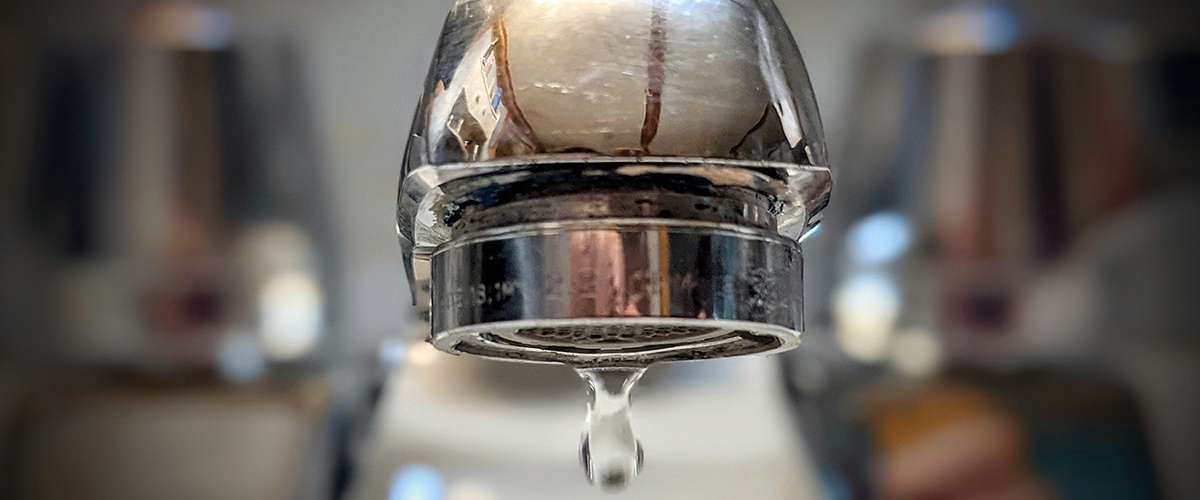Your Explanations Behind Fixing a Broken Faucet
Your Explanations Behind Fixing a Broken Faucet
Blog Article
They are making a few good points relating to How to Fix a Dripping or Leaky Faucet in general in this content further down.

Leaking taps may appear like a minor aggravation, yet their effect exceeds just the annoyance of the noise. From drainage to incurring unnecessary financial expenses and health and wellness dangers, disregarding a trickling faucet can bring about different repercussions. In this short article, we'll look into why it's vital to address this usual house problem immediately and successfully.
Wastefulness of Water
Environmental Influence
Leaking faucets contribute dramatically to water waste. According to the Epa (EPA), a solitary faucet leaking at one drip per secondly can throw away greater than 3,000 gallons of water annually. This not just pressures water resources however additionally affects ecosystems and wildlife dependent on them.
Financial Expenses
Increased Water Bills
Beyond the environmental impact, dripping faucets can inflate water expenses significantly. The built up wastefulness with time converts right into higher utility expenses, which could have been stayed clear of with prompt repairs.
Possible Home Damage
Furthermore, prolonged trickling can lead to damage to components and surfaces surrounding the faucet. Water accumulation can trigger staining, deterioration, and even architectural concerns if left ignored, resulting in additional fixing prices.
Health and wellness Worries
Mold and Mold Growth
The consistent visibility of wetness from a trickling faucet produces an excellent environment for mold and mildew and mold growth. These fungis not only endanger indoor air high quality but likewise posture health and wellness threats, particularly for people with respiratory problems or allergies.
Waterborne Illness
Stationary water in leaking taps can become a breeding place for microorganisms and other microorganisms, raising the threat of waterborne diseases. Pollutants such as Legionella microorganisms thrive in stationary water, potentially bring about major health problems when consumed or inhaled.
Do it yourself vs. Professional Fixing
Benefits and drawbacks of DIY Repair Service
While some might try to repair a leaking tap themselves, do it yourself repairs come with their own collection of obstacles. Without proper expertise and tools, DIY attempts can worsen the concern or bring about incomplete repair work, extending the trouble.
Benefits of Working With an Expert Plumber
Employing a specialist plumber makes certain that the underlying source of the leaking tap is addressed properly. Plumbing professionals possess the experience and equipment to detect and fix tap problems effectively, conserving time and reducing the danger of additional damages.
Step-by-Step Overview to Dealing With a Dripping Tap
Tools Required
Prior to trying to fix a dripping tap, collect the essential devices, including an adjustable wrench, screwdrivers, replacement components (such as washers or cartridges), and plumber's tape.
Typical Tap Issues and Their Solutions
Determine the kind of faucet and the particular issue creating the drip. Typical troubles consist of damaged washers, rusty shutoff seats, or faulty O-rings. Describe producer instructions or on-line tutorials for step-by-step advice on fixings.
Safety nets
Routine Maintenance Tips
To stop trickling faucets, perform regular maintenance such as cleaning aerators, inspecting for leakages, and changing worn-out components immediately. Furthermore, take into consideration setting up water-saving devices or updating to a lot more reliable components.
Significance of Prompt Repairs
Addressing leaking faucets as quickly as they're discovered protects against additional water waste and possible damage, eventually conserving both water and cash in the long run.
Influence On Home Value
Perception of Well-Maintained Home
Keeping a residential property in good condition, consisting of addressing maintenance problems like trickling taps, enhances its viewed value and value among prospective purchasers or renters.
Impact on Resale Worth
Qualities with properly maintained plumbing components, including faucets, command higher resale worths in the property market. Dealing with dripping taps can add to a positive impression during property assessments and arrangements.
Ecological Responsibility
Individual Contribution to Preservation
Taking duty for fixing dripping faucets aligns with more comprehensive efforts toward water conservation and environmental sustainability. Every individual's activities jointly make a substantial influence on maintaining precious resources.
Sustainable Living Practices
By focusing on punctual repairs and adopting water-saving habits, individuals contribute to lasting living techniques that profit both existing and future generations.
Verdict
Attending to a trickling tap surpasses plain ease; it's an important step toward conserving water, lowering economic prices, and safeguarding health and wellness and building. Whether with do it yourself repair services or professional help, taking action to take care of trickling faucets is a tiny yet impactful means to advertise accountable stewardship of resources and add to a much healthier, a lot more sustainable future.
How to Fix a Leaky Faucet: Step-by-Step Repair Guide
A leaky faucet may seem like a simple annoyance, but if it's not fixed promptly, that leak could cost hundreds to potentially thousands. From water damage to mold, mildew, and high water bills, even a tiny leak can be catastrophic if left unattended. Damage like this can even affect the overall value of your home, so it's important to take the right approach for leaky faucet repair. You may need the help of a plumber in some cases, but we've got a few tips you can try on how to fix a leaky faucet before calling the pros.
Four Faucet Types
When you're learning how to fix a leaky faucet, the first step is knowing what kind of faucet you're working with! There are four common types.
Cartridge Faucets
Cartridge faucets come in one- or two-handled varieties. In one-handled cartridge faucets, hot and cold water combines in a single cartridge. In the two-handled versions, hot and cold water are controlled separately and mixed in the faucet.
Ball Faucets
Ball faucets have a single lever you push up and down to adjust the pressure and rotate to change the temperature. A slotted metal ball controls the amount of water allowed into the spout.
Compression Washer Faucets
They're the oldest type of faucet, but they're still used in many homes — especially older ones. Compression faucets have two separate handles that, when turned, raise or lower the washer that seals a water valve. This valve stops water from flowing through the faucet when it is turned off.
Disc Faucets
Disc faucets rarely need to be repaired due to their maintenance-free design. The water flow is controlled by two discs — the upper one raises and lowers against a fixed lower disc, creating a watertight seal. If your disc faucet starts leaking, you may need to replace the seals or clean residue buildup from the inlets.
Fixing a Leaky Faucet
Step 1: Turn Off the Water
Whether you're learning how to fix a leaky bathtub faucet or how to fix a leaky kitchen faucet, always turn off the water supply to your working area when you're fixing a leak. The last thing you want is a flood added to your list of things to fix.
Look for the shutoff valves below your sink or around the tub and turn them clockwise to stop the water flow. If your faucet doesn't have shutoff valves, you may need to turn off the water for the whole house. Check to make sure it's off by turning the faucet on. If nothing comes out, you're ready to start the repair.
Step 2: Take Apart the Faucet
How you disassemble your faucet depends on the type of fixture you have. You can use a flathead screwdriver to remove the caps on top of the handle or handles for cartridge and compression faucets. Inside, you should see handle screws. Unscrew these with a screwdriver to remove the handle.
Disc- and ball-style faucets will typically have an inlet screw near the handle, and removing that will reveal the interior of the faucet.
Detach the Valve Stem
For cartridge- and compression-style faucets, you'll see the inner valve stem or cartridge once you remove the faucet handles. If you have a compression faucet, unscrew the brass valve stem. If you have a cartridge faucet, pull out the cartridge. If your cartridge has been in place for a while, it may require some tools or extra force to remove it due to mineral deposits.
Examine and Replace Parts
Once you've removed the parts, check them out to confirm what needs to be replaced. You may see corroded rubber washers, O-rings, stems, or cartridges. On a ball-style faucet, check the seats and springs for damage.
If you need to repair a leaky disc faucet, check the inlet and seals on the lower disc.
Once you determine what parts must be replaced, visit your local hardware store. Bring the damaged parts with you to ensure you can purchase the correct components to replace them.
Clean Valves and Faucet Cavity
If you've removed a stem or cartridge, you may notice mineral buildup in the faucet's threads. Use white vinegar to clean the valve seat by soaking it for a few minutes, then scrub it away with a soft toothbrush and rinse with warm water. You can also clean the interior of the faucet in the same way.
Reassemble the Faucet
Once your faucet is cleaned and the required parts have been replaced, it's time to reassemble it. Put the pieces back together and slowly turn the water supply back on. Doing this slowly is crucial because too much initial water pressure can damage the new hardware you've just installed.
https://homewarranty.firstam.com/blog/how-to-fix-leaky-faucet

As a serious reader about Why Are My Faucets Dripping (And Can I Fix It Myself)?, I thought sharing that editorial was sensible. For those who appreciated our blog post kindly do not forget to share it. Thanks for taking the time to read it.
Report this page